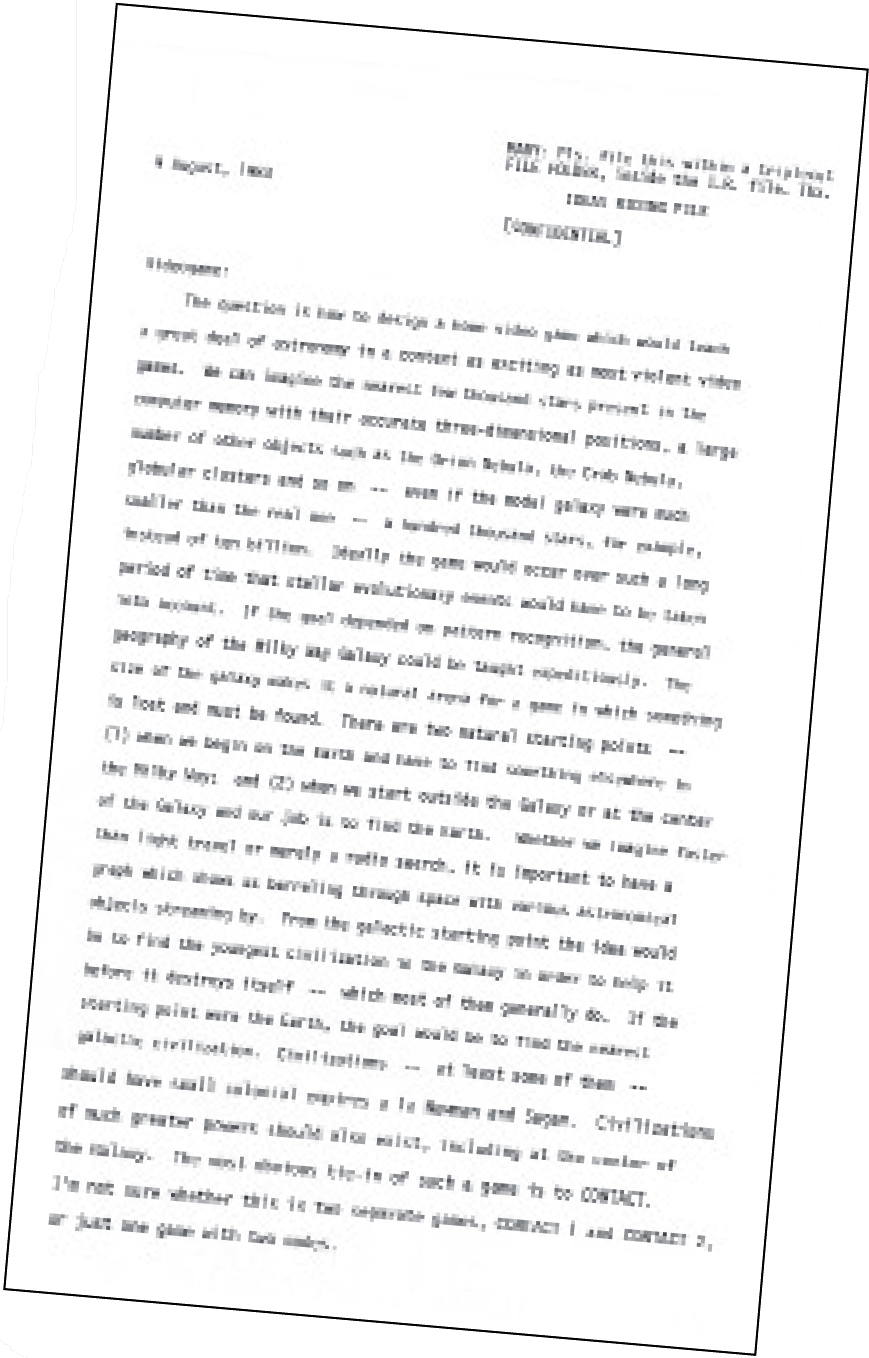Right to the Source
Envisioning the Possibilities of Educational Gaming with Carl Sagan
Envisioning the Possibilities of Educational Gaming with Carl Sagan
By Kellie Taylor
In the late summer of 1983, when video games were relatively new, astronomer, cosmologist, and science communicator Carl Sagan recognized their potential value as he imagined “how to design a home video game which would teach a great deal of astronomy in a context as exciting as most violent video games.” His typed notes reflected his interest in creating a game that would include a hundred thousand stars in its model galaxy and take place over stellar evolutionary events.
Science games and simulations—whether in the form of a board game or a system incorporating augmented or virtual reality—can provide students with opportunities to visualize abstract concepts, engage in active learning and knowledge construction, and even give feedback on the outcomes of their efforts.
In the late summer of 1983, when video games were relatively new, astronomer, cosmologist, and science communicator Carl Sagan recognized their potential value as he imagined “how to design a home video game which would teach a great deal of astronomy in a context as exciting as most violent video games.” His typed notes reflected his interest in creating a game that would include a hundred thousand stars in its model galaxy and take place over stellar evolutionary events.
Sagan imagined the goal of the game would be for players to find something that was lost by use of pattern recognition, while learning the geography of the Milky Way. He proposed two possible starting points for the game: Earth or the galaxy. If starting in the galaxy, the goal would be to find “the youngest civilization in the galaxy in order to help it before it destroys itself—which most of them generally do.” If starting the game on Earth, the goal would be to make contact with the nearest galactic civilization. Both game approaches would teach astronomical geography, the possibilities of futuristic travel, and interactions with life forms from other planets, including those from more technologically advanced civilizations.
While Sagan may not have realized his idea of a “Contact” video game, Contact was the title of his 1985 novel (that eventually became a motion picture film in 1997) dealing with the theme of contact between humanity and an extraterrestrial life form.
Invite your students to read Sagan’s notes and challenge them to create their own educational game.



